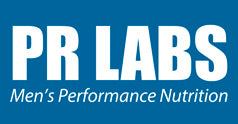How to Check for Prostate Cancer at Home
Understanding the importance of prostate health, particularly for men over the age of 40, cannot be overstated. Knowing the signs of this disease and catching it early can make a significant difference in treatment and prognosis.
Self screening isn’t as thorough as professional screening, but it is a good way to keep tabs on your health between visits to your doctor.
Recognizing the Symptoms of Prostate Cancer
Being aware of the early signs of prostate cancer is critical. Here are the symptoms you should watch out for:
- Frequent urination, especially during the night
- Difficulty starting or stopping urination
- Weak or interrupted urine flow
- Painful or burning sensation during urination or ejaculation
- Blood in the urine or semen
Resources like the Mayo Clinic and the American Cancer Society provide in-depth information about symptom frequency and other prostate health concerns. It's a best practice to cross-check any symptoms you notice with a healthcare professional.
Understanding Prostate Cancer and Its Risks
Prostate cancer is a condition where cells in the prostate gland grow uncontrollably. While it's more common in older men, it isn't exclusive to the over-40 crowd. Here's what you need to watch out for:
- Age: Your risk increases as you get older, particularly after 40.
- Genetics: A family history of prostate cancer can raise your risk.
- Diet: High fat, low fiber diets are often associated with a higher risk.
- Lifestyle: Smoking and limited physical activity can contribute to your risk.
Prostate cancer doesn't always show symptoms at first, which is why understanding these risks is essential. According to organizations like the American Cancer Society, screenings are recommended for certain age groups. Check out their guidelines for when and how often you should be screened.
How to Conduct At-Home Prostate Health Checks
At-home health checks are a proactive step towards understanding your prostate health. Here's how to conduct a basic at-home assessment:
- Home PSA Tests: Purchase a home PSA (Prostate-Specific Antigen) testing kit. Follow the instructions carefully.
- Collect a blood sample using the kit provided
- Send the sample to a certified lab for analysis
- Receive your results and discuss them with your doctor
- Symptom Diaries: Keeping a record of any symptoms you experience can be incredibly helpful.
- Note down any urinary or sexual problems, dates, times, and frequency
- Track the severity and duration of symptoms
- Share this diary with your healthcare provider during consultations
Regular medical checkups are crucial, particularly for men over 40 and those with a family history of prostate issues. If you're concerned about your prostate health, don't hesitate to reach out to your doctor for further evaluation.
Advanced Methods for Monitoring Prostate Health
Advanced monitoring methods are vital for a comprehensive evaluation of your prostate health. Discuss with your doctor the best approaches and frequency of tests such as PSA testing, Digital Rectal Exam (DRE), biopsies, and imaging like MRI and Ultrasound, based on your individual risk factors.
Professional Evaluation and Proactive Prostate Health Management
Knowing how to check for prostate cancer at home is useful, but professional evaluation is paramount. Seek medical advice if you notice any unusual symptoms, and remember to have routine health assessments, including prostate screenings, as part of your healthcare routine.
- Be proactive: Combine regular at-home checks with professional evaluations.
- Monitor changes: Note any changes or symptoms and discuss them with your doctor.
- Trust professionals: Always rely on healthcare providers for an accurate assessment of your prostate health.
By being vigilant and consulting with healthcare professionals, you take an active role in managing your own health.
Diet and Lifestyle: Their Impact on Prostate Well-being
Here are some steps you can take to help support your well-being:
- Eat Plenty of Fruits and Vegetables: Fill your plate with a variety of colorful produce. High-fiber, nutrient-rich choices like berries, tomatoes, leafy greens, and cruciferous vegetables such as broccoli could be especially beneficial.
- Choose Healthy Fats: Select fats that support heart health, like those found in nuts, seeds, and fish. Aim for multiple servings of fish per week and use olive oil for cooking.
- Cut Down on Red Meat: Consider reducing the amount of red meat, particularly processed meats, in your diet. Opt for lean proteins like chicken, turkey, or plant-based alternatives instead.
- Limit Alcohol and Quit Smoking: Alcohol can impact your health in various ways, so moderation is key. If you smoke, make quitting a priority to reduce your health risks, including those related to the prostate.
- Stay Active: Regular exercise can help you maintain a healthy weight and support overall health. Aim for at least 150 minutes of moderate-intensity activity each week.
- Try Supplements: Natural, and Doctor formulated supplements like Prost-P10x can greatly improve prostate health. Learn more about how it can help you!
PR Labs’ Comprehensive Approach to Prostate Well-being
At PR Labs, you'll find not just high-quality supplements like Prost-P10x, but also a partner in your journey to prostate well-being. Their commitment to excellence is evident in their products, rigorous safety testing, educational resources, supportive customer service, and engagement in scientific research. With PR Labs, you take confident steps towards caring for your prostate health, supported by dedicated experts in the field.
PR Labs is dedicated to promoting men's health through:
- Quality Ingredients: Carefully chosen for their products.
- Safety Testing: Ensuring supplements meet high safety standards.
By following a balanced diet, using supplements like Prost-P10x, and tapping into PR Labs' wealth of knowledge, you set the stage for optimal prostate and overall well-being.
Join Our Community & Save 10% Off Your First Order
We’ll send you a coupon code for 10% off your first order. Stay on our list
and we’ll keep you updated with tips for optimal health, new product launches, sales, and more!




